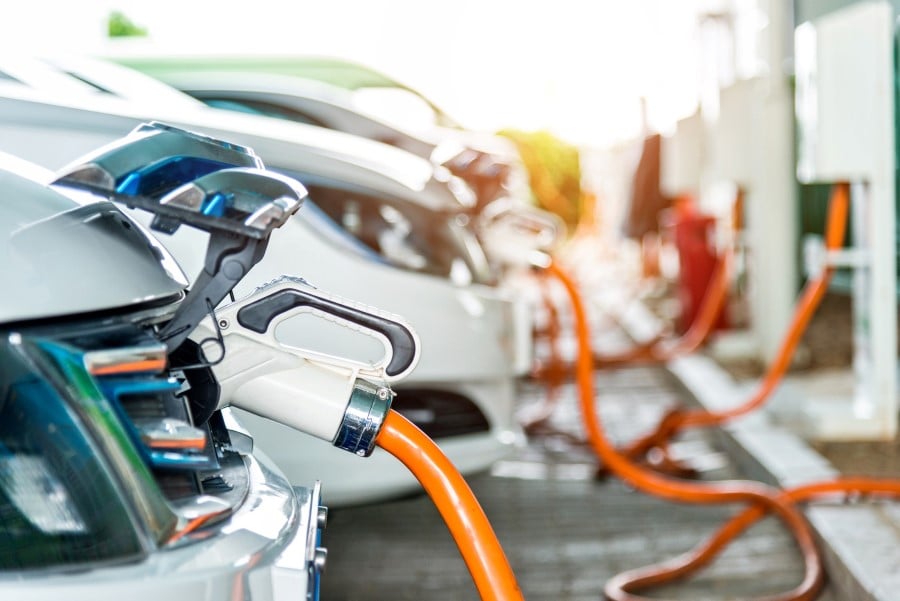
A regulatory requirement for new apartment buildings to be ready for electric vehicle (EV) charger installation could come into effect as early as 2023. This has resulted in part from a multi-year advocacy campaign by Ai Group and the Electric Vehicle Council.
Ross De Rango, Chair of Ai Group’s Electrical Vehicle Member Reference Group and Head of Energy and Infrastructure at the Electric Vehicle Council, said the move would greatly contribute to an increase in EV take up in Australia.
“One of the big issues around reluctance in EV uptake is for people who don’t have easy access to charging their car at home,” Mr De Rango said.
“If you live in a multi-storey apartment building and you park your car in a parking space under the building, installation of a car charger is often a complex thing to do. If there’s no supporting electrical equipment or plan from the owners' corporation around how to deliver EV charging for that location, then it’s much, much harder for you to go to an EV by comparison to a petrol vehicle.”
Industry groups including the Housing Institute of Australia and the Property Council of Australia, led by Ai Group, have lobbied the Australian Building Codes Board (ABCB) to write provisions into the National Construction Code (NCC) to ensure new builds will be ready to accommodate EV charger installation.
“We’re not asking for much in terms of the cost of EV readiness,” Mr De Rango said.
“If we consider a building of 100 apartments, the extra spend we’re talking about is around $40,000-$50,000 for the whole building. In the context of a build worth $30milllion or $50million, it’s not a lot of money.
“However, the developers don’t necessarily see the value in it and don’t necessarily do it without there being a mandate for it. That’s why we’re trying to drive through the construction code.”
In time, consumer demand will fix the problem, Mr De Rango said.
“When a person is buying an apartment, readiness for EV charging is not at the top of their shopping list today,” he said.
“It will be in the future, though. If we were to have this conversation in 10 years’ time and you were trying to sell an apartment off the plan that wasn’t ready for an EV charger, it would be a harder sell. Over the medium term, consumer demand will fix this problem. In the short term, consumer demand has not fixed this problem.”
Apartment owners face a substantial bill if installation is done retrospectively.
“It’s much more expensive to do it later,” Mr De Rango said.
“To do it later is more like $250,000 because of all the inconvenience and cost associated with retrofit.
“It typically involves turning off and modifying the main switchboard of the building, which means you need to get everyone out of the building for a day or two. You need to drill holes through concrete in the carpark and run new large cables through the carparking space, which means everybody needs to be out of the way for that process, too.
“It costs a lot more because you’re trying to fit electrical infrastructure into a building that wasn’t designed for it. For example, when you go into the carpark, where do you put the electrical infrastructure if every space that’s available has already been consumed with car parks and bike cages?
“Whereas if you build it at the time of construction, it can be part of the design. It’s cheap, it’s easy and there’s no inconvenience to anyone.”
A retrospective fit out also requires a majority of apartment owners to commit to the expenditure.
“In an apartment complex, the individual owner can’t install an EV charger in their parking space unless the owners’ corporation approves,” Mr De Rango said.
“You need to get each member of the owners’ corporation to vote for the shared expenditure. It’s a democratic process. Once we’re at a point where half the cars are EVs, it won’t be as difficult to get a majority of owners to commit to expenditure but at this point, EVs make up a tiny fraction of the vehicle fleet, so it’s very hard to get a majority to agree to spend that kind of money.”
Mr De Rango said there had been steady progress.
“The ABCB has released a public comment draft of provisions for the NCC including provisions largely aligned with the work that we have done,” he said.
“We’ve gone from zero provisions for EV in the 2019 NCC — which didn’t even contemplate it — to draft provisions for the 2022 code, which spell out ‘here is what you need to do to prepare for EVs across all these different building types’.
“They’re not quite there yet, but they’ve made massive strides forward from one revision to the next. This will be released in 2022 and will likely take effect for any new buildings that go up from 2023 onwards.
“I’m confident we will see some measures around EVs. Exactly what those measures are is the subject of public comment draft right now. We have lots of people who have a strong interest in 100% readiness in apartment complexes. The idea being that you prewire the building so that you are then able to deploy, in future, an EV charger in every parking space in the building.
“The challenge we’ve got is that the buildings going up today are going to be used for the next 40 or 50 years, so every time we put up an apartment tower today and we don’t think about it, we’re creating an expensive problem that will have to be solved later.”
James Thomson, Ai Group’s Senior Adviser Standards & Regulation, praised the collaboration occurring among members and peak industry bodies to bring about change.
“Our journey started with an industry-wide forum in Melbourne in 2019 that established that the EV rollout in Australia could be supported with an ‘Electric Vehicle ready’ concept in new apartment buildings,” Mr Thomson said.
“To capture the momentum from the forum we formed the EV Member Reference Group and developed a submission to the Australian Building Codes Board. National Construction Code 2022 will likely reflect the outcome of this effort.
“This is a good example where Ai Group brought together our members who are often competitors to advocate for regulatory change that is to the betterment of the entire market,” Mr Thomson said.

Wendy Larter is Communications Manager at the Australian Industry Group. She has more than 20 years’ experience as a reporter, features writer, contributor and sub-editor for newspapers and magazines including The Courier-Mail in Brisbane and Metro, the News of the World, The Times and Elle in the UK.